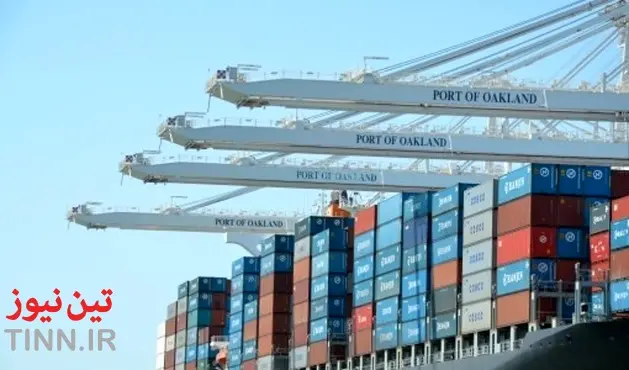|
Code:
79670
|
Imports Rebound at Southern California Ports

TIN news: The two busiest U.S. ports reported slight growth in imports, the latest sign that many companies are holding back on spending as they wait for the economic picture to clear.
The ports of Los Angeles and Long Beach, which form the largest port complex in the Western Hemisphere, reported a 37% jump in container imports from a year earlier, when both ports slowed to a crawl amid protracted labor negotiations. Compared to the same period in 2014, the ports’ combined volume only grew 1%. Exports were up 5% from last year but down 18% from January 2014.
January’s volumes show that West Coast ports have largely recovered from last year’s congestion. However, growth remains subdued as U.S. retailers and manufacturers have been slow to ramp up imports after the holidays, opting instead to work through large inventories built up last year. The strong dollar has reduced exports by making U.S. goods more expensive in foreign markets. Even so, Los Angeles port officials said it was their busiest January on record.
“Certainly they bounced back a lot from last year, but in the longer scheme of things, they should hold the champagne,” said international trade economist Jock O’Connell.
Los Angeles imported 367,209 20-foot equivalent units, a standard measure for container cargo, up from 259,206 last January. Long Beach handled 278,491 TEU of imports, up from 213,667 a year prior.
Los Angeles exported 126,241 TEU, up from 124,365 last January. Long Beach’s 106,739 was an improvement on last year’s 98,462.
Meanwhile, empty container movement continued to grow. Empties were up almost 25% from January 2014, and more than 37% from this month last year. Long Beach officials attributed the surge in empties to businesses returning containers that had been imported full of “post-holiday sales” items, now making the return trip to Asia. The Port of Los Angeles moved 210,949 empty TEUs in January, and the Port of Long Beach moved 150,958.
Some Southern California shipping businesses are bracing for an uptick in inbound cargo after the shuttering of the Outer Harbor Terminal in Oakland, that port’s second largest of five terminals. The port says it will direct cargo from that terminal to others nearby, but some analysts warn that could add to congestion.
However, Mr. O’Connell said much of Oakland’s imports are destined for local markets, and trucking them up from Southern California would potentially be too expensive.
The ports of Los Angeles and Long Beach, which form the largest port complex in the Western Hemisphere, reported a 37% jump in container imports from a year earlier, when both ports slowed to a crawl amid protracted labor negotiations. Compared to the same period in 2014, the ports’ combined volume only grew 1%. Exports were up 5% from last year but down 18% from January 2014.
January’s volumes show that West Coast ports have largely recovered from last year’s congestion. However, growth remains subdued as U.S. retailers and manufacturers have been slow to ramp up imports after the holidays, opting instead to work through large inventories built up last year. The strong dollar has reduced exports by making U.S. goods more expensive in foreign markets. Even so, Los Angeles port officials said it was their busiest January on record.
“Certainly they bounced back a lot from last year, but in the longer scheme of things, they should hold the champagne,” said international trade economist Jock O’Connell.
Los Angeles imported 367,209 20-foot equivalent units, a standard measure for container cargo, up from 259,206 last January. Long Beach handled 278,491 TEU of imports, up from 213,667 a year prior.
Los Angeles exported 126,241 TEU, up from 124,365 last January. Long Beach’s 106,739 was an improvement on last year’s 98,462.
Meanwhile, empty container movement continued to grow. Empties were up almost 25% from January 2014, and more than 37% from this month last year. Long Beach officials attributed the surge in empties to businesses returning containers that had been imported full of “post-holiday sales” items, now making the return trip to Asia. The Port of Los Angeles moved 210,949 empty TEUs in January, and the Port of Long Beach moved 150,958.
Some Southern California shipping businesses are bracing for an uptick in inbound cargo after the shuttering of the Outer Harbor Terminal in Oakland, that port’s second largest of five terminals. The port says it will direct cargo from that terminal to others nearby, but some analysts warn that could add to congestion.
However, Mr. O’Connell said much of Oakland’s imports are destined for local markets, and trucking them up from Southern California would potentially be too expensive.















![AIRBUS A380 [MORE THAN 600 PASSENGER’S CAPACITY PLANE]](https://cdn.tinn.ir/thumbnail/4jCp4EQvCU0b/IjHVrSYQrIAqIzXuTzADR7qLYX4idQT4nfq__26E5SCUPLMqfhWkWajvuO9Wfq1ql1TjV4dhkrHliNQU82kMpo2NNftT_NGEwHc9KXtN_rk731bmifa2IQ,,/airbus-a380-structure1.jpg)

Send Comment